Keeping your dehumidifier clean is essential for maintaining its efficiency, extending its lifespan, and ensuring the air quality in your home remains optimal. Over time, dust, mold, and mineral deposits can build up in your device, leading to reduced performance or even potential health hazards. This guide will walk you through the step-by-step process of deep cleaning your dehumidifier, covering everything from disassembly and filter maintenance to sanitizing the water reservoir and inspecting internal components. By following these practical tips and techniques, you’ll ensure your dehumidifier operates at peak performance and continues to provide a healthier indoor environment. Whether you’re a seasoned pro or new to home appliances, this comprehensive guide has got you covered!
Why is regular cleaning of your dehumidifier important?
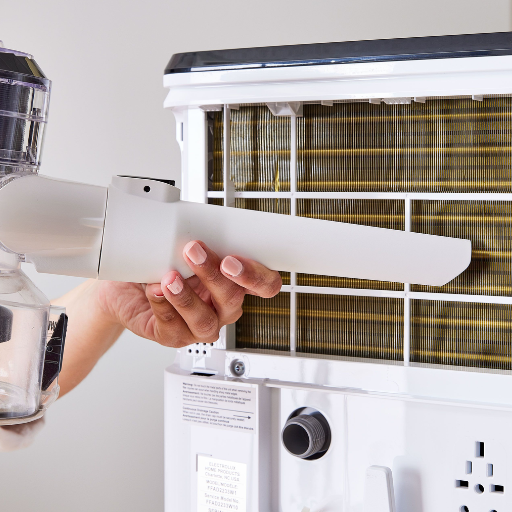
Regular cleaning of your dehumidifier is crucial to maintain its efficiency and longevity. Over time, dirt, dust, and mold can accumulate in the filters, water reservoir, and internal components, reducing its performance and potentially circulating harmful particles back into the air. By cleaning your dehumidifier, you ensure optimal moisture removal, improve air quality, and prevent costly repairs or replacements due to neglect.
Preventing mold and mildew growth
Preventing mold and mildew growth requires maintaining low indoor humidity levels, ideally between 30-50%. Use a dehumidifier in damp areas, such as basements, to reduce excess moisture effectively. Ensure proper ventilation by using exhaust fans in bathrooms and kitchens, where steam and moisture accumulate the most. Clean and dry wet areas promptly, including spills and leaks, to avoid creating favorable conditions for mold. Regularly inspect and clean your dehumidifier’s components, such as filters and the water collection tray, to prevent the device itself from becoming a breeding ground for mold. Additionally, sealing leaks around windows, pipes, and roofs can prevent water intrusion and further reduce risk.
Maintaining optimal performance
To maintain optimal performance of your dehumidifier, it’s essential to follow consistent practices that ensure efficiency and longevity. First, position your dehumidifier in an open space with good airflow, ideally at least 6–12 inches away from walls or obstructions. Regularly clean or replace the air filter based on the manufacturer’s recommendations to maintain effective operation. Empty and clean the water tank frequently to avoid mold buildup, and use a solution of water and mild detergent for thorough cleaning. Periodically check the coils and vents for dust or debris, ensuring unrestricted airflow. For dehumidifiers with a continuous drain option, inspect the hose connection to prevent clogs or leaks. Lastly, keep the room temperature within the operational range specified by the manufacturer, as most dehumidifiers struggle to function in extremely cold environments. By implementing these steps, you’ll enhance efficiency, prolong the device’s lifespan, and maintain a healthier indoor atmosphere.
Extending the lifespan of your dehumidifier
To ensure your dehumidifier lasts longer and works effectively, regular maintenance is key. First, clean the air filter consistently as recommended by the manufacturer—typically every two to four weeks. This helps prevent dust buildup that could obstruct airflow and compromise performance. Secondly, always empty and clean the water reservoir to avoid mold or bacteria growth that could damage the internal components. For dehumidifiers with a continuous drain, check the hose periodically for clogs or leaks to ensure efficient operation. Additionally, placing the unit in a well-ventilated space and avoiding overly tight corners will help maintain airflow and prevent overheating. It’s also essential to run the device at an appropriate room temperature, generally between 41°F and 90°F, as extreme conditions can reduce efficiency and strain the system. Simple practices like these not only enhance efficiency but also significantly extend the lifespan of your dehumidifier.
What tools and materials do you need to clean a dehumidifier?
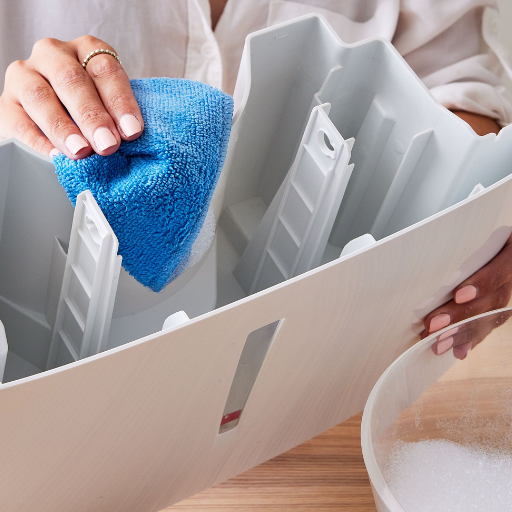
To clean a dehumidifier, you’ll need a few essential tools and materials. These include a soft cloth or microfiber towel for wiping surfaces, a vacuum cleaner with a brush attachment to remove dust from the filter and vents, warm water for cleaning detachable parts, mild dish soap for stubborn grime, and a small brush or toothbrush for cleaning tight spaces. Additionally, having a bucket or sink nearby to rinse parts can make the process more efficient.
Essential cleaning supplies
Modern technologies such as dehumidifiers require maintenance in proper cleaning, for which the use of appropriate cleaning tools make the work easy. For example, a soft cloth or a microfiber cloth does not scratch surfaces, hence it is ideal for gentle scrubbing. Vents and gratings can be vacuumed with an upholstery attachment. Parts of the machine can be cleaned with warm water detergent. Apart from the listed materials, a small brush or an old toothbrush is best for scrubbing small areas. With these materials, thorough scrubbing is possible. If a filter is included in the model, appropriately available replacement filters should also be provided to maintain efficiency. With all these materials, one can ensure that their dehumidifiers can be sustained to perform optimally for long duration.
Optional items for deep cleaning
Optional tools that can be used if a deeper clean is required are as follows:
Cotton Swabs – Help in cleaning the small cracks and regions such as the air intakes and exhaust vents.
Compressed Air Canister – A quick way to clear particulates from the mechanical components or fan blades without the need to disassemble the entire unit.
White Vinegar – Disinfects and removes minerals from internal components and does a great job on its own.
Soft Microfiber Cloths – Helpful in removing water streaks or marks on the external surfaces of the dehumidifier.
Screwdriver Set – Aids in the removal of parts like the casing, enabling internal thorough cleaning of the components.
Your appliance will function optimally for as long as possible when these tools are used, ensuring the device is clean. Do not forget to check the manufacturer’s manual for instructions regarding the deep cleaning procedures.
How often should you clean your dehumidifier?
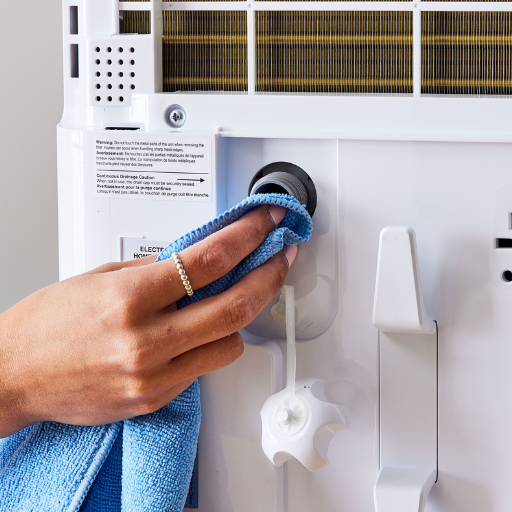
To maintain optimal performance and hygiene, it’s recommended to clean your dehumidifier every two to three weeks. This includes emptying and washing the water reservoir, wiping down the external surfaces, and cleaning or replacing the air filter as specified by the manufacturer. Regular cleaning prevents mold, mildew, and bacteria buildup, ensuring efficient operation and longevity of your device.
Regular maintenance schedule
To keep your dehumidifier running efficiently, follow this concise maintenance routine:
Daily Tasks
Empty the water reservoir to prevent overflow and bacterial growth.
Quickly inspect for visible dirt or blockages.
Every Two to Three Weeks
Clean the water reservoir with warm, soapy water to eliminate mold or mildew.
Wipe down the external surfaces using a soft cloth and a mild detergent.
Remove and clean the air filter based on the manufacturer’s instructions for proper airflow.
Every Three to Six Months
Deep clean the internal components if accessible.
Check and clean the condenser coils, particularly if you notice reduced performance.
Annually
Inspect the device for wear and tear or unusual noises; replace any faulty components.
Test the controls and settings for accuracy and responsiveness.
Adhering to this schedule maintains optimal performance, extends the lifespan of your dehumidifier, and ensures a healthier indoor environment.
Signs that indicate your dehumidifier needs cleaning
From my experience, there are a few clear signs that your dehumidifier might need cleaning. If you notice a musty or unpleasant odor coming from the device, it’s often a sign that mold or mildew has built up inside. Reduced performance is another clue—if your dehumidifier isn’t extracting as much moisture as usual or if the room still feels damp, it might be due to clogged filters or dirty coils. Additionally, visible dirt or debris in the water collection tank or air grilles is a good indicator that it’s time for a thorough cleaning. Regular inspections can help you catch these issues early and keep your dehumidifier running effectively.
What’s the step-by-step process to clean a dehumidifier?
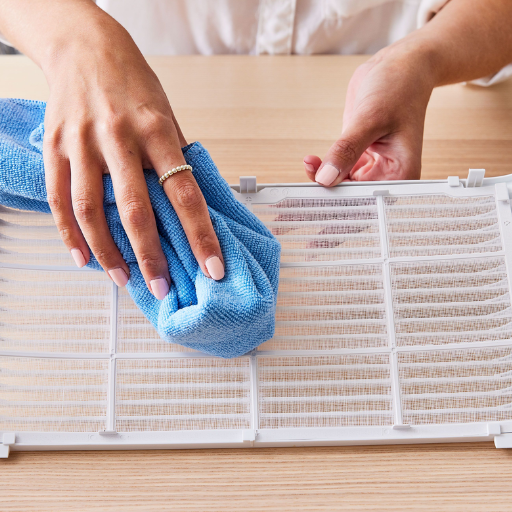
Cut Power to the Dehumidifier
To clean the unit of a dehumidifier, it is imperative to first cease its activity and unplug it from power.
Drain the Water Collection Container
Take the water bin out and dispose of the water. Clean it with warm water mixed with soap and polish it to ensure no dirt, mildew or mold lingers, and rinse thoroughly. Leave it to dry before placing it back.
Perform Maintenance on the Air Filters
Maintain the air filter and detach it from the main control. For those that can be washed, clean them with water. For others, rinsing with clean water is sufficient. Make sure the filter is free from any obstructions. After rinsing, allow it to dry completely before reinsertion. If needed, replace the air traps.
Dust Off the Unit’s Outer Frame and Air Vents
Decommissioned soft cloths are perfect when used around air vents, while a vacuum can be used to suck any unwanted particles from the unit’s exterior.
Do an Inspection and Maintenance on The Coils
If condensing or evaporator coils are within reach, use a soft brush, or a cloth that is barely damp to wipe them down, taking care to not bend or otherwise damage the coils.
Post Clean Up
After cleaning, the unit has to the set up in reverse order and on the power source after the unit has dried completely. Check if there are any problems with it running smoothly.
Carrying out this basic maintenance procedure every few weeks will help improve your dehumidifier’s efficiency and longevity.
Unplugging and disassembling your dehumidifier
To safely unplug and disassemble your dehumidifier, start by ensuring the unit is turned off and unplug it from the electrical outlet. Place the unit on a stable, flat surface to avoid tipping during disassembly. Begin by removing the water collection tank and carefully emptying any stored water. Next, consult the user manual for specific instructions to access internal components, such as the filter, coils, or fan. Typically, accessing these parts involves gently removing screws or snapping off panels, depending on the model. Work cautiously to prevent damage to fragile parts. Always prioritize safety by handling components with care and avoiding direct contact with any electrical parts.
Cleaning the filter and coils
To clean the filter, remove it from the dehumidifier according to the instructions in your user manual. Rinse the filter under lukewarm water to remove dust and debris, using a soft brush if necessary for stubborn dirt. Allow the filter to air dry completely before reinserting it into the unit.
For the coils, begin by gently vacuuming them using a soft brush attachment to clear away loose dust. If deeper cleaning is required, use a coil cleaner spray specifically designed for this purpose. Follow the product instructions carefully, allowing the cleaner to soak if needed, and then wipe the coils clean using a soft cloth. Be sure the coils are completely dry before reassembling the unit to prevent any potential damage. Regular cleaning, performed every two to three months, ensures optimal performance and energy efficiency.
Washing the water bucket and exterior
The water bucket requires removal from the unit with care in order to prevent water spillover. First, make sure the water in the bucket is emptied. Wash the bucket using warm soapy water, getting rid of all residue and mineral build up. After rinsing, the bucket should be free of soap and allowed to dry fully prior to reinsertion. A soft and slightly damp cloth can be used to clean any dust or dirt on the outside casing of the unit. Bleach and any other strong cleaners should be avoided to prevent damage to the surface of the unit. Cleaning both the exterior and bucket increases the lifespan of the dehumidifier while also improving its efficiency.
How do you clean and maintain the dehumidifier filter?
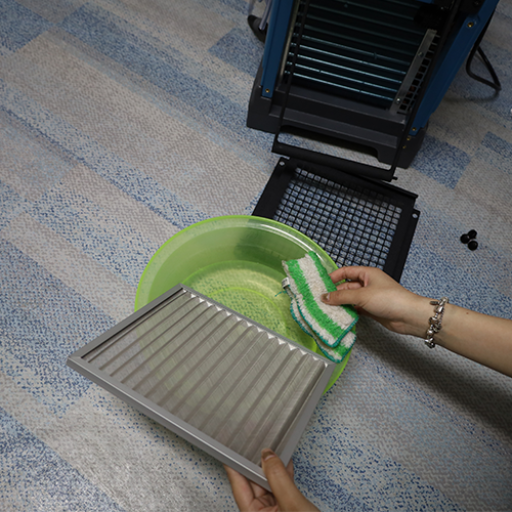
To commence cleaning and maintaining the dehumidifier filter, it is prudent to first turn off and unplug the machine for safety reasons. As stated by the manufacturer, the filter should be removed from its place, which is usually behind a panel or a grille. The first step involves rinsing the filter under lukewarm water. Dust and dirt should be removed without the use of harsh chemicals or scrubbing that could damage the filter. In cases where the filter is exceptionally dirty, Soft brushes, along with mild detergent, can be used to remove the dirt. The filter should be allowed to air dry completely before being placed back so that mold growth does not occur. Consistently maintaining the filter helps to ensure that the air quality remains optimal and that the dehumidifier functions well.
Removing and rinsing the filter
In order to maximize operational efficiency, dehumidifiers require their filters to be maintained as clean filters facilitate unimpeded airflow, enabling optimal performance. In addition, a clean filter actively traps greater amounts of allergenic materials such as pollen and dust, improving overall air quality. This practice will prolong the lifespan of the dehumidifier and reduce the likelihood of costly repairs or replacements. It is recommended that the filter be cleaned biweekly, or as directed, to achieve the best results.
Dealing with stubborn dirt and debris
In the event that the dehumidifier’s filter has a stubborn residue build-up, you will need to clean it in such a way that the filter is still usable. Start by taking the filter out, if the filter has persistent blemishes, you can soak it in warm soapy water for no longer than ten to fifteen minutes. Soaking, scraping, or using harsh mechanical or chemical methods will irreparably damage the filter, and thus these actions are strictly prohibited. Don’t forget to rinse all soap residues under running water as this is important. It is critical to rinse the filter before attaching it on the dehumidifier in order to dry it. When dealing with particularly difficult stains, it is easier to replace the filter.
What’s the best way to clean the dehumidifier coils?
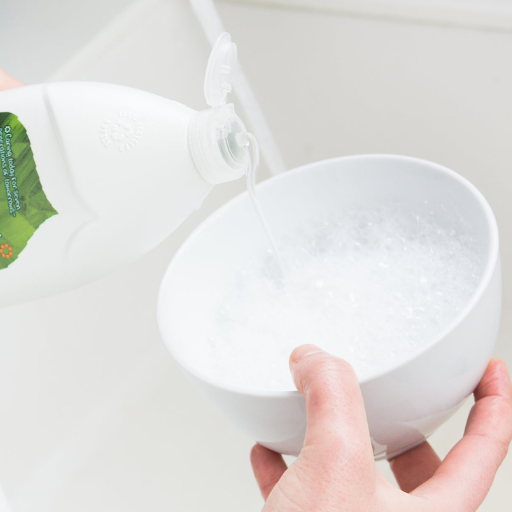
The initial step in cleaning the coils of your dehumidifier is to unhook it from the power source. The coils may be dusted and cleaned with a soft brush or vacuum brush attachment. The cleaning process can be enhanced with the application of a coil cleaning degreaser, but it must be used as directed on the label. Be careful not to scrub too vigorously on the coils, as doing so will lead to damage. The unit cannot be plugged back in until the coils have dried. Do not forget to check the user manual for details specific to your model of dehumidifier.
Using warm, soapy water for coil cleaning
It is relatively easy to clean dehumidifier coils by using warm, soapy water. Start by unplugging the dehumidifier and taking off any panels that cover the coils. Prepare a weak solution of dish soap and warm water. With a soft cloth or sponge, wipe the soft surfaces of the coils, taking care not to introduce too much water. After rinsing the cloth, remove the soap lather from the coils by wiping it with a clean, damp cloth. Let the coils air dry fully before putting the unit back together and switching it on. The improvement of the device should be checked against the recommendations of the manufacturer’s guide so that no warranty clauses are violated.
Alternative cleaning solutions for tough grime
Specialized coil cleaning springs can be advantageous when trying to remove tough grime from dehumidifier coils. These cleaners are specially designed for the reason that it will not damage the coils while still tackling tough dirt and debris build up. Simply spray the solution on the coils as described in the product guide and allow it to soak for the suggested period of time to free the coils from buildup. Afterward, use a soft brush or cloth to remove any leftover grime so the coils are indeed free of all dirt. Follow the instructions to rinse away any purchased residue and, wipe the coils, then allow them to air dry prior to reassembly of the unit. Ensure that you observe all safety measures and check the manual of the dehumidifier to ensure compatibility of the appliance with the cleaning products in use.
References
Frequently Asked Questions (FAQ)
Q: How often should I take to clean my dehumidifier?
A: It is recommended to clean your dehumidifier at least once a month to ensure it is running smoothly and to prevent mold and mildew growing inside.
Q: What steps should I follow to keep your dehumidifier in top condition?
A: To keep your dehumidifier in peak condition, regularly remove the filter, clean the dehumidifier bucket, and ensure the exterior of your dehumidifier is free from dust and debris.
Q: How do I safely remove the filter for cleaning?
A: First, unplug your dehumidifier and remove the bucket. Then, carefully remove the filter, rinse it with clean water to remove dust and mold spores, and let the filter dry completely before placing it back into the dehumidifier.
Q: Can you provide a guide on how to clean the coils?
A: Yes, begin by unplugging the dehumidifier and removing the bucket. Use a soft brush to gently remove all the dust from the coils, and if needed, clean with a mixture of water and mild detergent to prevent water damage.
Q: What is the proper way to clean the dehumidifier bucket?
A: Remove the bucket from the dehumidifier and wash it with warm, soapy water. Rinse thoroughly to remove any soap residue and let it dry before reassembling your dehumidifier.
Q: How can I prevent mold spores from accumulating in my dehumidifier?
A: Regular cleaning and maintenance, such as removing and washing the filter and cleaning the dehumidifier bucket, will help prevent mold spores and keep your home safe.
Q: How do I clean the exterior of your dehumidifier?
A: Wipe down the outside of your dehumidifier with a damp cloth to remove any dust or dirt. Avoid using harsh chemicals that may damage the surface.
Q: Why is it important to unplug your dehumidifier before cleaning?
A: Unplugging your dehumidifier ensures your safety by preventing any electrical hazards during the cleaning process and protects against accidental water damage.
Q: How do I know when it’s time to install a dehumidifier in my home?
A: If you notice excess water, mold and mildew growing, or persistent humidity issues, it might be time to consider installing a dehumidifier to keep your home comfortable.
Q: What are the benefits of keeping the dehumidifier running smoothly?
A: A well-maintained dehumidifier can help reduce humidity levels, prevent mold growth, and protect your home from water damage, contributing to a healthier living environment.



